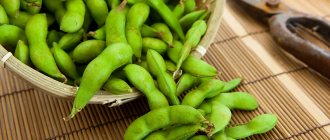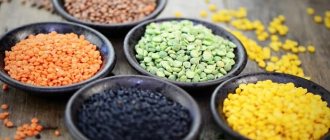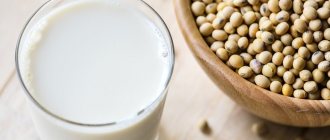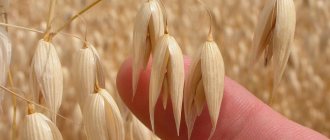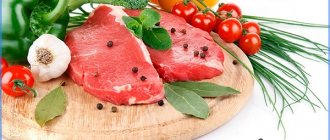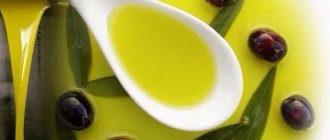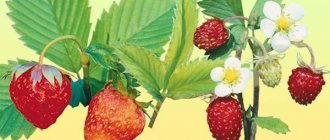Soybean (Chinese pea) is an annual herbaceous plant of the legume family, native to East Asia. Beans are considered a healthy and nutritious protein product, widely used in the food industry and in the field of traditional medicine.
Soybeans are added to feed for farm animals and included in dairy products. Processed beans are odorless and tasteless, but have the ability to absorb the flavors of other foods. This allows you to use them as a substitute in the preparation of any dishes.
Composition and calorie content of soybeans
The benefits of soy are due to its rich chemical composition. It contains:
- macro- and microelements: calcium, potassium, phosphorus, iron, silicon, magnesium, zinc, ash, manganese, sulfur, chlorine, aluminum, boron, fluorine, molybdenum, copper, cobalt, nickel;
- vitamins: group B (1, 2, 4, 5, 6, 9), D, C, E, A, H, PP;
- polyunsaturated essential fatty acids: linolenic, linoleic;
- bioflavonoids.
Gluten is the basis for soy sauce, but is not present in the beans themselves.
Soybeans are considered a nutritious product and contain a lot of calories, as evidenced by the BZHU coefficient: 100 g of beans account for 381 kcal. The amount of vegetable protein is 35 g or more, fat - 17.3 g, while approximately the same amount of carbohydrates, 10% water, 2% starch and 10% ash and fiber are present.
The calorie content of soy meat and dairy products differs from the above. There are 102 kcal per 100 g of meat. Proteins are 20.42 g, fats are 0.14 g, carbohydrates are 4.84 g. The calorie content of 100 g of milk is 54 kcal. Protein content - 3.3 g, fat - 1.8 g, carbohydrates - 5.7 g.
Soybeans
Soybeans are a crop of global importance. Oil and protein are obtained from them. In the United States, most of the crop is extracted with hexane, and the use of "roasted" defatted soy products (50% protein) makes it possible to raise farm animals (eg, chicken, pigs, turkeys) on a commercial scale never before seen in human history. Very little of the soybean crop is consumed directly by humans. Soy products are found in a wide variety of processed foods. During World War II, soybeans became an important staple in North America and Europe, primarily as a substitute for other protein foods and as a source of edible oil. During World War II, the United States Department of Agriculture approved the use of soybeans as fertilizer. In 1960-61, the United States provided duty-free access to the European market for its soybeans. In the 1960s, the United States exported more than 90% of the world's soybeans. By 2005, the largest exporters of soybeans were Argentina (39% of world soybean exports), the United States (37%) and Brazil (16%), and the largest importers were China (41% of world soybean imports), the European Union (22 %), Japan (6%) and Mexico (6%). Soybeans are grown most successfully in regions with hot summers, optimally at average temperatures of 20 to 30°C (68 to 86°F); At temperatures below 20°C and above 40°C (68°F, 104°F), soybean yields are significantly reduced. Soybeans can grow in a wide range of soils, with moist alluvial soils with good organic matter content being optimal for growth. Soybeans, like most legumes, accomplish nitrogen fixation by forming a symbiotic relationship with the bacteria Bradyrhizobium japonicum. For best results, an inoculum of the correct strain of bacteria should be mixed with soybean (or any other legume) seed before planting. Modern crop varieties typically reach a height of about 1 m (3.3 ft) and grow 80–120 days from sowing to harvest. The USA, Argentina, Brazil, China and India are the world's largest soybean producers and account for more than 90% of global soybean production. In 2000, the United States produced 75 million tons of soybeans, more than one-third of which were exported. It is expected that in 2010-2011 this figure will be more than 90 million tons. The average global yield of soybean crops in 2010 was 2.5 tons per hectare. The three largest soybean producers harvested about 3 tons of soybeans per hectare from their fields. Türkiye was the most productive soybean producer in the world in 2010. The national average yield was 3.7 tons of soybeans per hectare. The world record for soybean yield is 10.8 tons per hectare, achieved in 2010 by Kip Cullers, a farmer from Purdy, Missouri. Kip Cullers says the secret to his record soybean yields year after year is attention to detail, a proactive management style, irrigation, herbicides and keeping the plants healthy and dormant throughout the growing season. Environmental groups such as Greenpeace and WWF have reported that vast areas of the Amazon rainforest have been destroyed by soy farming in Brazil. American soil scientist Andrew McClung, who first showed that soybeans could be grown profitably in Brazil's ecologically diverse savanna region of Cerrado, was awarded the 2006 World Food Prize. Sewage sludge can be used as fertilizer for growing soybeans. Soybeans grown with sewage sludge are likely to contain elevated concentrations of metals. Soybean plants are vulnerable to a wide range of bacterial diseases, fungal diseases, viral diseases and parasites. One important soybean pest is the bollworm moth, the most common and destructive pest of soybean growth in Virginia. Soybeans can be grown organically, meaning without the use of synthetic pesticides and fertilizers. Experts say that by 2014, Brazil will surpass the United States in soybean production.
Useful properties of the product
Soybeans and products made from it have many beneficial properties. Soy products prevent allergies, osteoporosis, and prevent the development of diseases of the cardiovascular system, including hypertension and coronary heart disease. The indication for their use is the presence of excess weight. Thanks to lecithin, which is part of soy, fat metabolism in the body is accelerated, resulting in a decrease in the amount of fat deposits.
The product can be eaten both in pure form and in various products. For example, soy goulash is popular as a first course.
Soy contains stachinoses and raffinoses - substances necessary for the nutrition of intestinal bifidobacteria, which contribute to an increase in their number. They reduce the risk of dysbacteriosis, which significantly slows down the aging process of the body, increases life expectancy and has the most favorable effect on human health.
Soy helps get rid of osteoporosis. It contains isoflavones that compensate for the lack of female sex hormones - estrogens. Their deficiency is the main cause of the development of this disease in women during menopause. Soy contains a sufficient amount of calcium, the main component of bone tissue.
Soy milk helps relieve ulcers and gastritis. In appearance, the drink resembles cream or regular milk. The product has a sweetish taste and contains many protein compounds, minerals and B vitamins. It is quickly absorbed by the body and reduces the secretion of gastric juice.
Important components contained in soy are choline and lecithin. Their usefulness is due to their ability to restore nerve tissue and brain cells. They are responsible for erectile and motor functions, the thinking process, attentiveness, and the ability to remember and assimilate new information. These components are involved in the metabolism of fats and help reduce cholesterol levels in the blood.
The list of diseases for the treatment of which it is advisable to include soy products in the regimen includes:
- Parkinson's disease;
- diabetes;
- inflammation of the gallbladder;
- liver diseases;
- dystrophic changes in muscle tissue;
- glaucoma;
- cholecystitis;
- exhaustion of the body;
- weakening of memory.
Soy products are used to prevent cancer. Isoflavonoids similar to estrogens prevent the development of hormone-dependent cancer. The growth of tumor tumors is suppressed by phytic acids. Soy products also contain a component called genestein. It is able to stop metastasis and prevent the progression of some forms of cancer in the initial stages of their development.
Vitamin content
Table 1
| Vitamins | Content | Daily norm |
| A (retinol) | 12 mcg | 1.2 % |
| E (α-, β-, γ-tocopherols) | 1.9 mg | 19 % |
| B1 (thiamine) | 0.94 mg | 62.67 % |
| B2 (riboflavin) | 0.22 mg | 12.22 % |
| B3 (PP) (nicotinamide) | 9.7 mg | 51.05 % |
| B4 (choline) | 270 mg | 54 % |
| B6 (pyridoxine) | 0.85 mcg | 42.5 % |
| B9 (folacin) | 200 mcg | 100 % |
Soy contains both high and low levels of vitamins when considered according to approved nutritional significance standards.
At the highest level of importance in the food value chain are:
- E, keeps the muscular system in good shape.
- B1, required to normalize the nervous and muscular systems.
- B2, maintains body tone.
- PP, participates in the formation of hemoglobin.
- B4, is involved in the biosynthesis of heme and proteins, cell proliferation, and tissue respiration.
- B6, participates in the metabolism of lipids and amino acids.
- B9, supports the hematopoietic and digestive system.
Vitamins of low content include vitamin A, which takes part in all functions of the body related to its growth and proper metabolism, and preserves the structure of the cornea of the eye.
Harm and contraindications for use
Despite many beneficial qualities, soy and products made from it can cause significant harm to the body. Contraindications to the use of this product are:
- urolithiasis disease;
- diseases of the endocrine system.
Excessive consumption of soy products leads to accelerated aging of the body. In this case, they inhibit the human endocrine system, suppress the development of brain cells, and can cause hormonal imbalance and provoke Alzheimer's disease. Because of this, problems such as:
- hives;
- dermatous skin rashes, eczema;
- chronic rhinitis;
- bronchial asthma;
- colitis;
- conjunctivitis;
- formation of stones in the bladder;
- obesity;
- prolonged constipation.
Roasted soybeans in large quantities are very harmful for men. Its use is fraught with a decrease in testosterone levels and a decrease in sperm activity. Signs of hormonal imbalance in men are enlarged mammary glands and deterioration in sexual activity. As for women, abuse of soy leads to disruption of their reproductive system and is fraught with the development of infertility.
The inclusion of the product in the daily diet often causes weakened immunity, failure of metabolic processes in the body, and the emergence and growth of malignant tumors.
Soy for weight loss
In recent years, soybeans have been included in diets for weight loss. Refusal of meat products in order to minimize animal fats and carbohydrates guarantees weight loss. It is worth considering that over a long period of time, a soy diet can be harmful to human health. It is fraught with a lack of nutrients in the body.
Soy lowers blood cholesterol and has a unique ability to burn fat . It is thanks to these qualities that the result is achieved quite quickly.
The method of losing weight with soy was developed by leading nutritionists. The principle of this diet is as follows: fresh white bread, cakes, pastries, pasta and potatoes are completely excluded from the diet. Products such as milk, butter, cottage cheese, cheese and meat are replaced with soy products.
During diet therapy, physical activity is strongly recommended: squats, jumping and running in place, abdominal exercises, arm swings, etc. The ideal option would be cycling and morning jogging in the fresh air.
Properties of soybeans
Nutritional value and composition | Vitamins | Minerals
How much does soybean cost (average price per 1 kg)?
Moscow and Moscow region.
60 rub.
Soybean originated in China, where its name is “shu,” which means “big bean.” The cultivation of soybeans in this country began in the third millennium BC. Later, the taste and nutritional properties of soybeans were also appreciated in Japan, from where it came to Russia during the Russo-Japanese War, that is, relatively recently.
Soy is perhaps the most controversial vegetable currently eaten. Scientists are still fiercely arguing about the benefits and harms of soy. One way or another, soy is included in the diet of every person, because it is added to a wide variety of semi-finished products, sausages, pasta and confectionery, and mayonnaise.
Use during pregnancy and breastfeeding
It is recommended to include a sufficient amount of vitamins, amino acids and protein products found in soy in a pregnant woman's diet.
Beans in their pure form can be consumed when carrying a child only taking into account contraindications and the individual characteristics of the expectant mother’s body.
Soy proteins are digested much more easily than natural meat and eggs, so taking them reduces the load on the gastrointestinal tract, which is important for women during pregnancy. Soy contains a small amount of cholesterol and fat, and therefore products made from it do not have a negative effect on cardiac activity. At the same time, it contains a lot of lecithin, which is beneficial for the liver.
It is worth considering that soy products contain phytohormones of plant origin, which affect the functioning of the thyroid gland. Their entry into the body helps reduce the production of natural hormones. As a result, the expectant mother may develop a disease such as hypothyroidism. The disease is fraught with the formation of intrauterine pathologies in the fetus and premature termination of pregnancy.
Soy lowers blood pressure and can cause allergies, and its excessive consumption often causes the formation of kidney stones.
For the above reasons, soy protein is strictly contraindicated for women during lactation.
Harm of soy
The main harm of soy is that with the development of genetics and its unpredictable experiments, the risk of purchasing genetically modified soy instead of natural has increased significantly. Unfortunately, the consequences of consuming this product for the human body have not been fully elucidated. Soy is not recommended for people with endocrinological diseases, since the substances contained in soy slow down the production of thyroid hormones. You also need to be careful with soy during pregnancy. So, the harm of the product, although not obvious, remains one of the most discussed issues in modern science.
Among other things, soy is a record high-calorie product. Its calorie content is 364 kcal. per 100 gr. product, so people who are unhappy with their figure should not get carried away with soy.
Soy in a child's diet
According to scientific research, Chinese peas have a negative effect on the child’s hormonal levels. This is especially true for modified products. For girls, excessive passion for bean-based products is fraught with premature ripening, and for boys - hormonal imbalance, characterized by an increase in estrogen levels.
Soy can cause pancreatic diseases, provoke allergies and disrupt the gastrointestinal tract.
Baby food based on the product, which is offered by some manufacturers, is also not recommended to purchase. There are scientific studies that prove that it disrupts the functioning of the immune system, which will further negatively affect the child’s health.
Soy recipes
The taste of a soybean dish can only be appreciated if the beans are of high quality.
If their surface is covered with plaque or small specks, the shape of the seeds is uneven - the top layer is chipped, there is a smell of dampness, then the purchase should be discarded. You should only buy beans with a smooth, uniform-colored surface that, when pressed with a fingernail, leaves a dent. It is not recommended to purchase soybeans in pods. Properly selected soybean soaked in water - okara - has a consistency similar to soft cottage cheese, is tasteless and does not smell of anything. Soy Recipes:
- Soy milk
. Approximately 150 g of dry soybeans are soaked overnight in 3.5 cups of cool boiled water. Then this water is decanted, the mass is transferred to a blender, 1.5 cups of clean boiled water are added and brought to complete homogeneity. The procedure is repeated several times, constantly changing the water. To avoid “losing” the okara, use a fine sieve or gauze when decanting the water. After 2-3 decantations, the okara is put in the refrigerator - this is an excellent raw material for cookies or dumplings, and the liquid is set to boil for 2-3 minutes, stirring constantly, otherwise it will run away or burn. You can improve the taste with sugar. Dough is kneaded with milk or cereal porridge is cooked. - Syrniki
. The okara left over from making milk is mixed half and half with cottage cheese, salted, sugar, egg and a little flour are added to give the dough the desired consistency. The cheesecakes are formed and fried on both sides in sunflower oil. - Sweet soy sauce
. Soy sauce for dressing vegetable salads, sushi and rolls can be prepared at home. Ginger root is grated on a fine grater (100 g), mixed with the same amount of fresh orange zest, and placed in a thick-walled frying pan with high sides. They also add soybeans (200 g), which were soaked for 8 hours to start cooking, a tablespoon of spices - cinnamon, ground ginger, anise, finely chopped leeks, 1-1.5 tablespoons of sugar. You can then adjust the seasonings to your liking. Place the frying pan on the stove, add 1.5-2 cups of sherry and cook over very low heat until the volume of liquid is reduced by three. Then the sauce is filtered through a sieve and ground. Should be stored in the refrigerator for no longer than 3 weeks. - Cutlets
. 400 g of soybeans are soaked for 13-16 hours, the water is drained and everything is ground in a blender until smooth. Add 2 tablespoons semolina, finely chopped onion and sautéed in vegetable oil, salt, 1 egg. The cutlets are formed, rolled in formed breadcrumbs and fried in sunflower oil. Pairs with any side dish. - Soy soup
. Soybeans (200 g) are soaked for 12 hours. Beets, onions and carrots - one piece at a time - are chopped and fried in oil. The water is drained from the beans and crushed. Let them cook for 20-30 minutes. At the end of cooking, add vegetables, spices - salt, pepper, bay leaf, garlic and bring to readiness. When serving, add herbs to each plate - dill, garlic or basil. - Cakes
. Soybeans are ground into flour. The recipe is for 3 cups of soy flour. Using a blender, beat the butter and sugar in the proportions of half a glass/glass. Beat 4 eggs with another glass of sugar. The mixtures are combined, brought to complete homogeneity, pour into the dough 1.5 cups of seedless raisins, half a teaspoon of soda and 2 teaspoons of spices - cinnamon, sweet paprika, cloves. Knead the dough, gradually adding soy flour. Bring to a thick puree-like consistency by adding red wine. The cakes are formed, placed on oiled parchment, and baked in an oven preheated to 200 degrees.
Dishes made from sprouted soybean sprouts are extremely popular in cooking. Dry beans are poured with water at a temperature of 22 degrees - its volume should be 4 times more than soybeans, and placed in a dark room for 10 hours. Then the water is decanted, the seeds are laid out on a damp cloth, covered with gauze on top and put in a fairly warm, dark place. Subsequently, they are washed daily and the bedding is changed. As soon as the sprouts reach 5 cm, they can already be cooked. Before heat treatment, sprouted soybeans are washed. Soy sprouts go well with onions, sweet bell peppers, garlic, zucchini, and herbs. Before preparing the salad, the sprouts must be boiled for 15-30 seconds.
